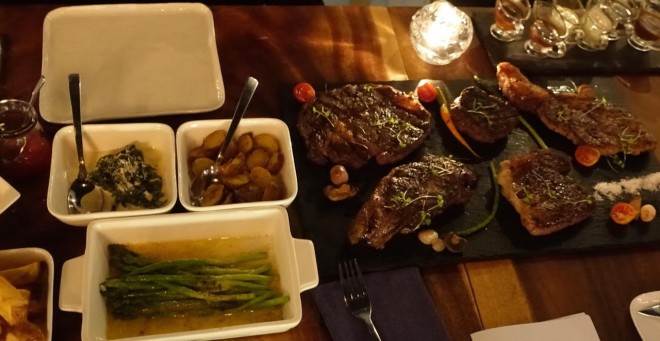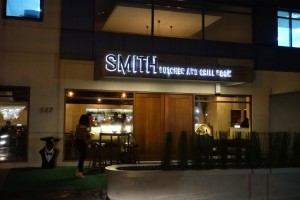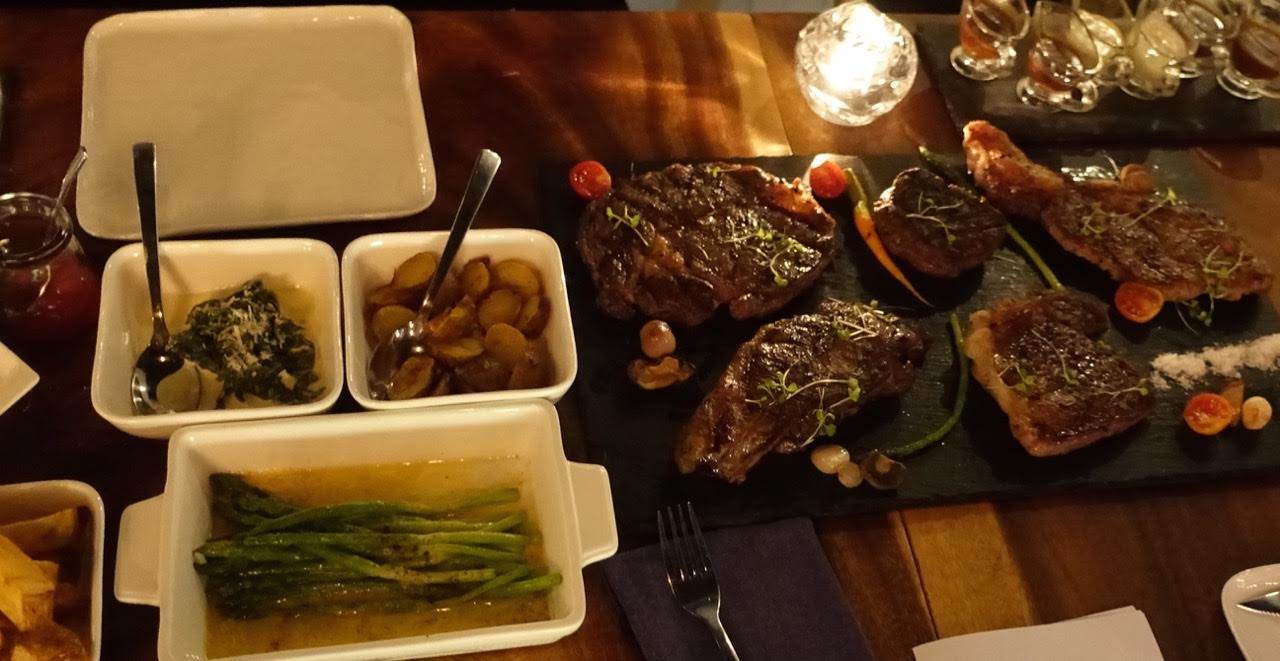
On the night members of the Iglesia ni Cristo were decanting themselves onto the main thoroughfares, we were in a steakhouse settling in to examine the menu of rare aged cuts of beef.
There was a vague sense of fiddling while Rome burned as we sat in a dimly lit room and examined the various cuts of meat in the aging cellar while a mob assembled itself a few kilometers away.
But then the nature of things in this city has become such that if we were to react to everything as though it were doomsday, we’d never leave our apartments and be stuck at home eating tinned food and rice. So despite reports of a possibly potent situation, we decided to push through with plans to meet for dinner.
We were determined to try out Smith, a “butcher and grill room,” which has been getting consistently good reviews. One would suppose the name is intended to invoke the famous Smith & Wollensky steakhouse, Peter Luger’s uptown competition, which incidentally were two names pulled out at random from a phone directory—unless it’s named after the profession, although I wouldn’t know what forging iron has to do with cooking a good steak.

Expansive
The space on H.V. de la Costa Street in Salcedo Village is obviously the result of some fairly significant capital outlay, an expansive cavern full of flickering candlelight and couples out on dates. Romance, it would seem, is also impervious to the vagaries of state politics.
But our fears that the restaurant might be a trendy hangout, with almost necessarily bad and meager food, was assuaged by the presence of tables of rotund men—always a good sign in any restaurant.
Smith claims to be the first restaurant in the Philippines to serve aged meat, and there was a suitably carunculated haunch of meat in the aging room flaunting its desiccated and mold-ridden exterior. Not that others haven’t tried, but I have yet to hear of a successful attempt.
Aside from temperature and humidity and the bacteria present in the air, the other consideration is sheer scale. You can’t age small portions of beef; once you’ve cut off the rind of exposed surface area, there has to be a big enough piece left to slice. And this, in turn, is much lighter because of water loss, so it must be sold at a much higher price, usually higher than the market will pay.
The server offered us an off-the-menu kind of anthology of their popular steaks, called Around the World: five steaks from five different countries on a single obscene platter of carnality.
There was a slab of Japanese Matsusaka, an aged Irish sirloin, Australian wagyu, French Charolais beef filet mignon and US prime rib. This platter comes with a selection of eight possible side dishes, an assortment of sauces and a dollop of mustard or horseradish (no, they don’t let you keep the condiments).
The Matsusaka beef is easy to like and is in keeping with the kind of beef that has been increasingly popular in town: almost all marbling, a shot to the arteries that makes you feel your heart might stop pumping at any moment. This is the kind of meat that is not so much savored as survived.
Letdown
The Irish was the one that most people had been raving about; it’s claimed to have been aged for 45 days, which is on the upper end of the aging spectrum. It was a bit of a letdown: It was more structured, which in my book is not a problem, as I’m not a great fan of steaks you can cut with a spoon; but it didn’t have the intense concentration of flavor that a very well-aged steak could provide.
The Charolais was the opposite: The filet mignon is the softest part of the tenderloin, and in the days when my parents were courting, ordering the filet mignon was going all out. I myself find it a bit too soft and too lean; but it had the best concentration of flavor, as is typical of any meat worthy of the appellation.
I do know that a cut of “boeuf de Charolles” is one of the best things one can cook with just salt and pepper, so I might be back for that.
But the runaway winner of the night was the Australian wagyu, which had just enough fat to be unctuous and melting but not so much as to overwhelm. The US prime rib would have been good in any other situation, but next to such exotic rarities it just failed to make a mark. It has been for such a long time the default steak of all meat lovers in Manila, so it simply felt too familiar.
The starters are forgettable; the dessert was execrable. The latter is a pity, because after a meal like that, one does look for something to seal the gullet and wind down the taste buds while digesting.
Neck and neck
And this is where I feel Elbert’s steak room still has an edge: The atmosphere there is intimate and encourages one to linger and ruminate, have a leisurely dessert and tea, or a cigar and Armagnac in the next room.
The large, impersonal atmosphere with raucous music and stygian lighting at Smith makes you want to hurry on. But when it comes to the quality and preparation of the meat, they are neck and neck, and I encourage people to try both and compare, though perhaps not one right after the other. It’s not good for your health or your wallet.
Though when things are as uncertain as they are in the political sphere, it might be best when all hell breaks loose to go down with a full stomach.
Smith Butcher and Grill Room, 147 H.V. de la Costa Street; tel. 0927-3759467













































